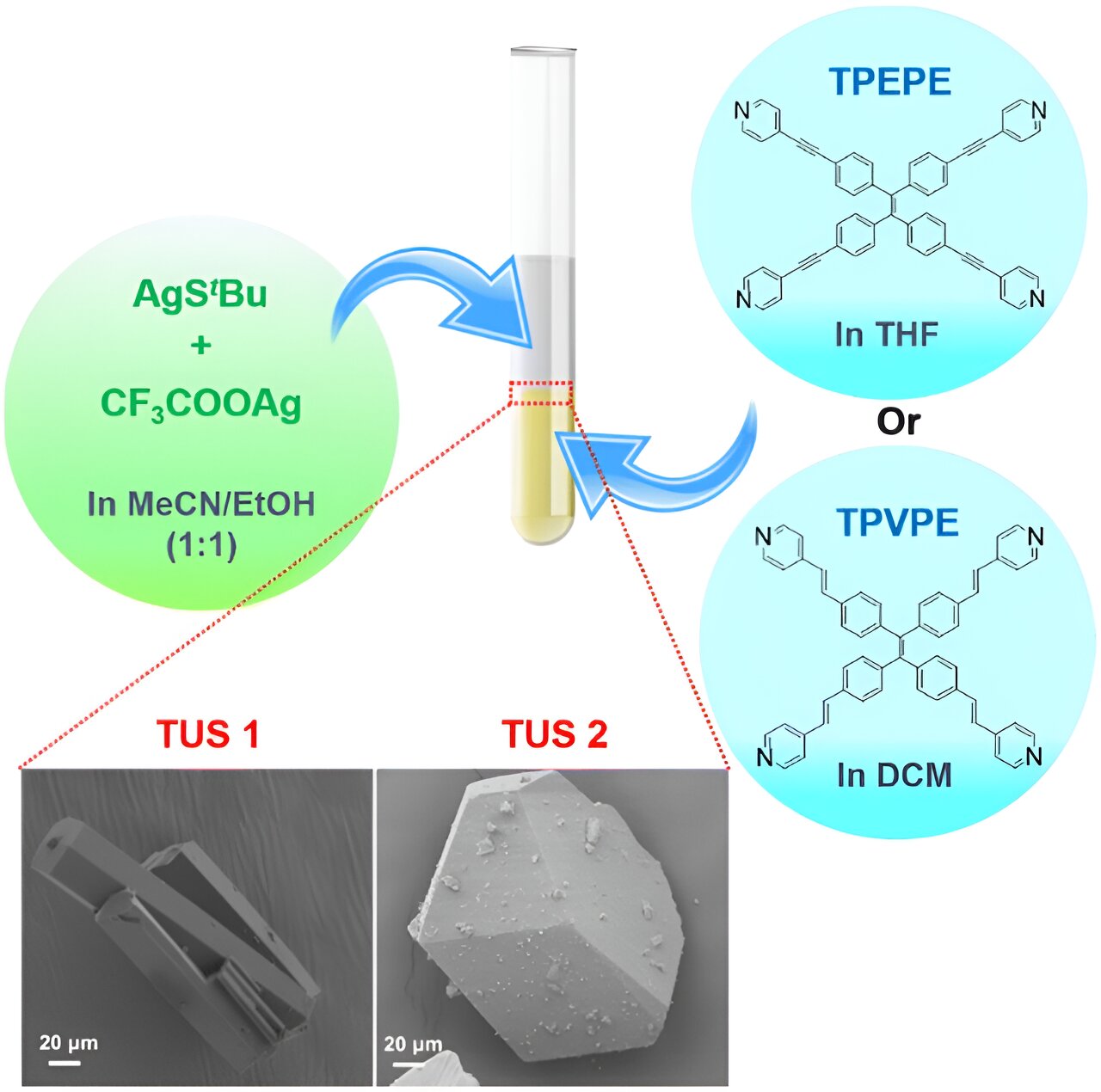In recent years, the utilization of silver nanoclusters (Ag NCs) has gained significant attention in various fields like material science, chemistry, and biology. Ag NCs, consisting of tens to hundreds of atoms, typically range in size from 1–3 nm. Scientists have made significant progress in creating and manipulating Ag NCs, leading to the development of silver cluster-assembled materials (SCAMs).
SCAMs are light-emitting materials comprising interconnected Ag NCs linked together by special organic molecules called “ligands.” These materials are notable for their structural designability at the molecular level and unique photophysical properties. However, the dissimilarity in their structural architecture when exposed to different solvents has hindered their widespread use.
To address this issue, researchers from Tokyo University of Science (TUS) recently developed two new types of luminescent SCAMs with a (4.6)-connected three-dimensional structure. These SCAMs consist of an Ag12 cluster core connected by quadridentate pyridine linkers. The two SCAMs are denoted as TUS 1 and TUS 2.
Professor Yuichi Negishi, the lead researcher, explains, “We have successfully developed two silver-cluster-connected architectures with a new linkage structure, which can be applied to environmental monitoring and assessment.” The study detailing their findings was published in the journal Nanoscale.
The SCAMs were synthesized using a simple reaction method, with the only difference being the linker molecules used. The researchers combined [AgStBu]n and CF3COOAg in a solution of acetonitrile and ethanol. The linker molecules used were TPEPE = 1,1,2,2-tetrakis(4-(pyridin-4-ylethynyl)phenyl)ethene and TPVPE = 1,1,2,2-tetrakis(4-((E)-2-(pyridin-4yl)vinyl)phenyl)ethene, dissolved in tetrahydrofuran and dichloromethane, respectively.
The metal solution was then added to the linker molecule solution and left to crystallize in the dark. After one day, yellow crystals formed at the junction of the two solutions, indicating the successful creation of the SCAMs.
The researchers conducted several tests to analyze the structure and stability of the SCAMs. They found that TUS 1 had a rod-shaped structure, while TUS 2 had a block-shaped structure. Additionally, the crystal structure of both SCAMs remained unchanged when immersed in different solvents, demonstrating their exceptional stability.
Due to their strong fluorescence properties and stability in water, the researchers explored the potential of SCAMs for detecting metal ions in aqueous solutions. Both SCAMs exhibited high sensitivity to Fe3+ ions, causing their fluorescence to be quenched at room temperature. The detection limits for Fe3+ ions were 0.05 and 0.86 nM L–1 for TUS 1 and TUS 2, respectively, comparable to standard values. Furthermore, the SCAMs showed selectivity towards Fe3+ ions and were not affected by other common metal ions.
These findings suggest that SCAMs have potential applications in environmental monitoring, particularly for the detection of Fe3+ ions in water. Professor Negishi remarks, “The ability to link silver clusters using various modes enables the fabrication of materials with diverse physicochemical properties. Further advancements in nanotechnology can lead to the development of smaller-scale materials and devices with enhanced functionalities.”
More information:
Jin Sakai et al, Synthesis and luminescence properties of two silver cluster-assembled materials for selective Fe3+ sensing, Nanoscale (2023). DOI: 10.1039/D3NR01920A
Citation:
Towards silver cluster-assembled materials for environmental monitoring (2023, July 27)
retrieved 27 July 2023
from https://phys.org/news/2023-07-silver-cluster-assembled-materials-environmental.html
This document is subject to copyright. Apart from any fair dealing for the purpose of private study or research, no
part may be reproduced without the written permission. The content is provided for information purposes only.
Denial of responsibility! TechCodex is an automatic aggregator of the all world’s media. In each content, the hyperlink to the primary source is specified. All trademarks belong to their rightful owners, and all materials to their authors. For any complaint, please reach us at – [email protected]. We will take necessary action within 24 hours.

Jessica Irvine is a tech enthusiast specializing in gadgets. From smart home devices to cutting-edge electronics, Jessica explores the world of consumer tech, offering readers comprehensive reviews, hands-on experiences, and expert insights into the coolest and most innovative gadgets on the market.


